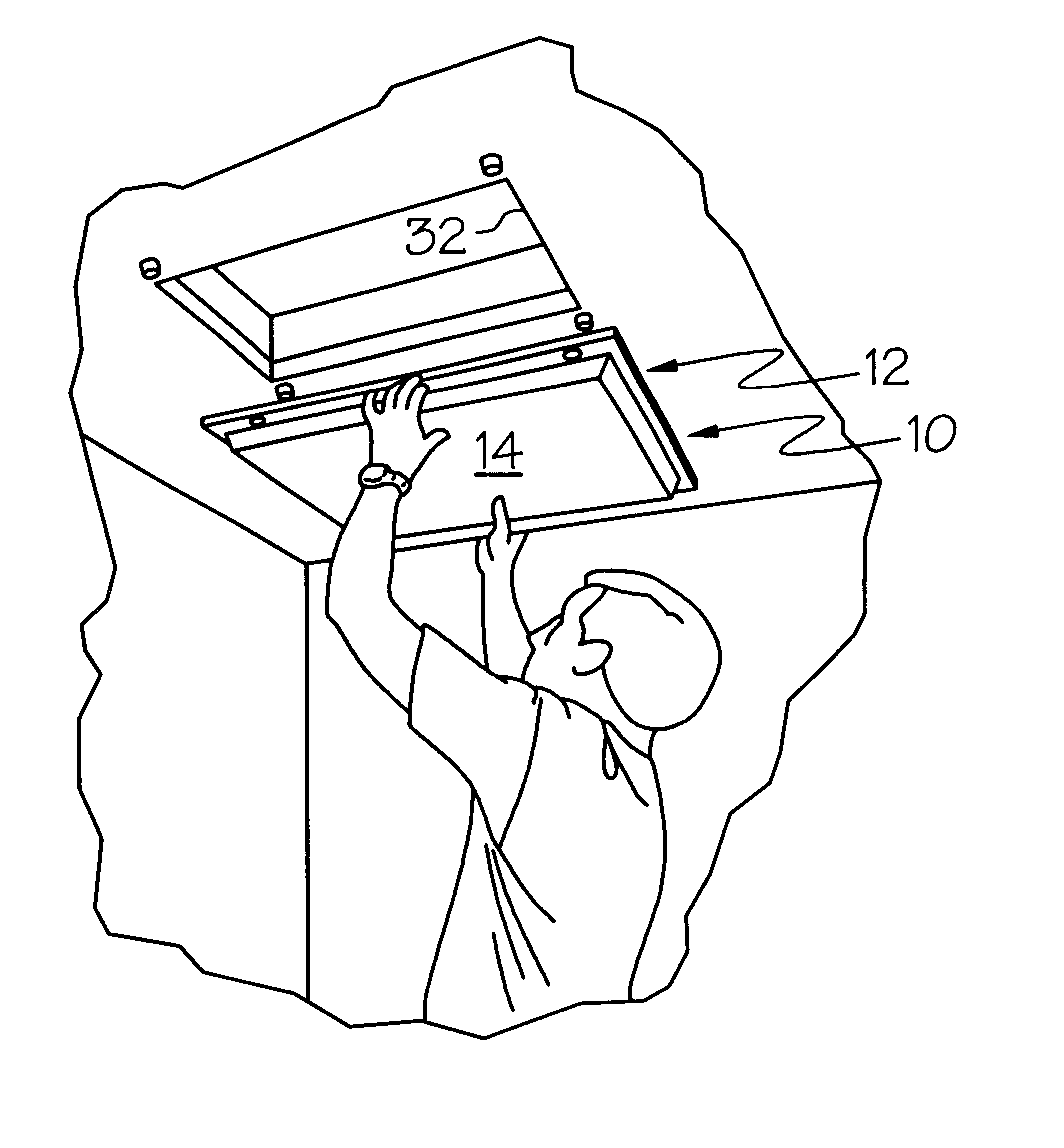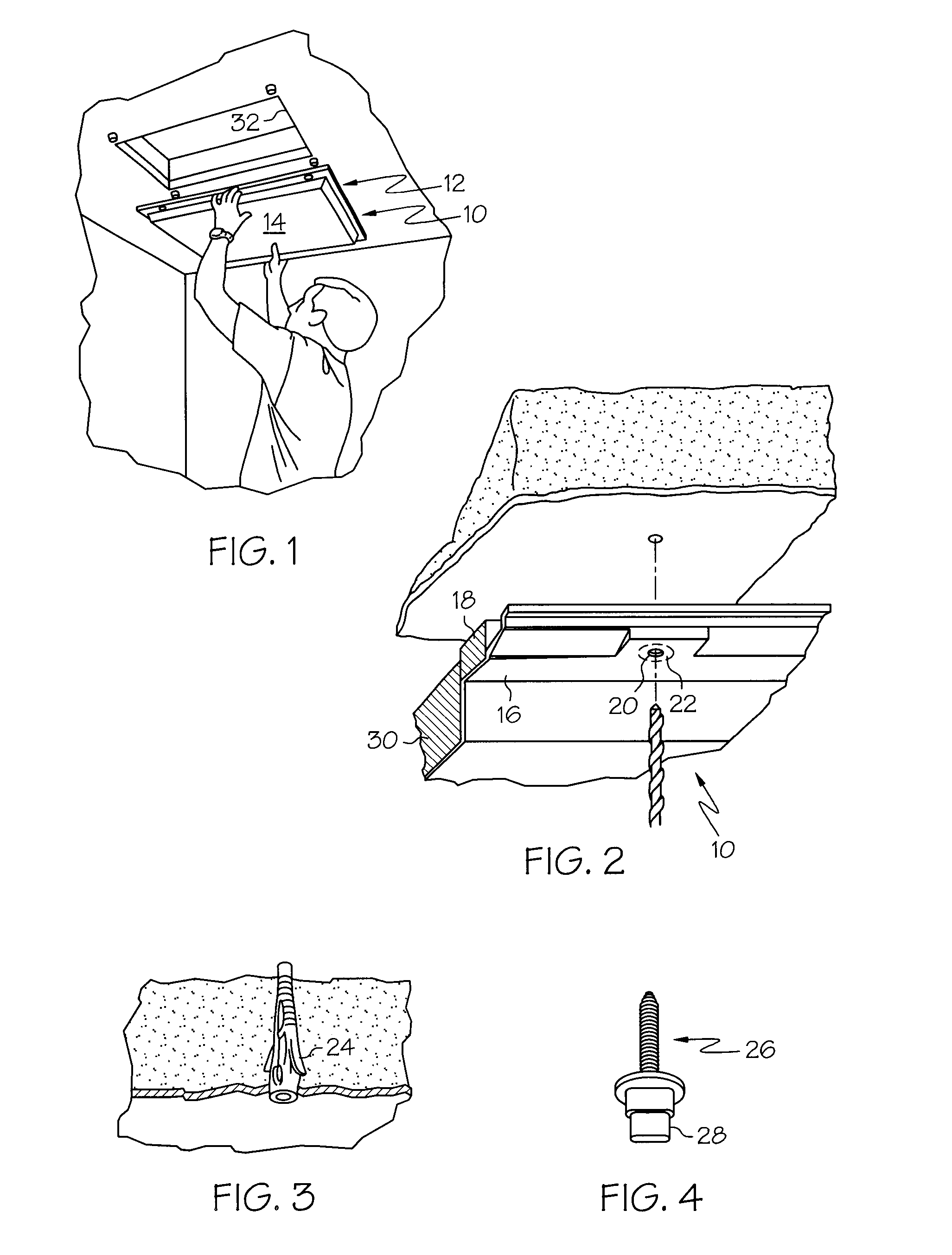Insulated attic access cover
a technology for accessing covers and attic areas, which is applied in the direction of movable stairways, building roofs, artificial islands, etc., can solve the problems of poor choice of drywall, easy cracking and breaking, and difficult handling of insulation above the drywall board
- Summary
- Abstract
- Description
- Claims
- Application Information
AI Technical Summary
Benefits of technology
Problems solved by technology
Method used
Image
Examples
Embodiment Construction
is hereafter described with specific reference being made to the drawings in which:
FIG. 1 is a perspective view of an installer positioning the attic cover of the invention over the previously positioned turnbuckle screws;
FIG. 2 is a partial perspective view of the attic cover showing how guide holes are used to accurately drill openings for threaded anchors;
FIG. 3 is a view of a threaded anchor of the invention secured in place; and
FIG. 4 is a side view of a turnbuckle screw of the invention.
With reference to the figures, the attic cover 10 of the invention is a generally rectangular, preferably molded plastic piece 12 which defines a central area 14 and an outer flange 16. The central area is sized to provide the insulation space and typically would hold a sheet of foam insulation 30. As seen in FIG. 1, the attic opening 32 typically is cut through ceiling wallboard and may or may not have a wooden frame into the attic. The attic cover 10 of the invention is sized to completely co...
PUM
 Login to View More
Login to View More Abstract
Description
Claims
Application Information
 Login to View More
Login to View More - R&D
- Intellectual Property
- Life Sciences
- Materials
- Tech Scout
- Unparalleled Data Quality
- Higher Quality Content
- 60% Fewer Hallucinations
Browse by: Latest US Patents, China's latest patents, Technical Efficacy Thesaurus, Application Domain, Technology Topic, Popular Technical Reports.
© 2025 PatSnap. All rights reserved.Legal|Privacy policy|Modern Slavery Act Transparency Statement|Sitemap|About US| Contact US: help@patsnap.com


